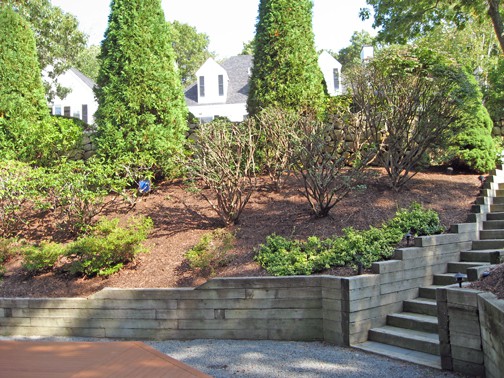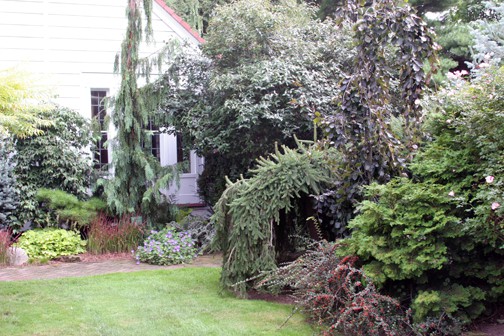Report From An Opinionated Gardener – April 28
I read a tweet tonight that was reminding people to space their plants to allow for future growth. I have blogged and spoken about the same topic many times, and yet recently I’ve come to think about spacing in another way.
Yes, if you think about the ultimate size a shrub or tree will attain, and space them accordingly, this allows for growth that won’t impinge on surrounding plants. If you want to appreciate the true form of a shrub or tree, this is certainly one way to go.
After believing this for years, however, I visited the Kral garden where plants were placed where there was even the smallest space, and allowed to grow into and among the neighbors as they will. In other words, they are permitted to do what plants do in nature: intermingle.
When we look at forests and fields, the trees, shrubs and perennials haven’t been spaced to allow for mature growth. In the once wild area between my house and the lake, for example, pine, oak and maple trees flourish even though they are sometimes growing three or four feet apart. Nature plants in layers, both horizontal and vertical, and her shrubs, trees and perennials touch and meld together.
How we humans, as garden planters and designers go wrong isn’t with spacing, I’ve decided…it’s with trying to control a plant’s growth. We shear shrubs into unattractive meatball shapes to keep them from touching, and we separate perennials with acres of much that resemble chipped wood deserts.
The plants are happy to duke it out between themselves, and often, frankly, they find a way that allows each plant to thrive even as they coalesce and share sunlight, water and nutrients. In the last five to ten years there has been a movement in the thinking about good garden design that both appreciates and emulates how plants mingle. Piet Oudolf is one of the originators and masters of this movement.
It’s not that I’ve moved totally into the “go wild and let every plant fend for itself” school of planting. There are times when good spacing of shrubs and trees, with under plantings of low perennials, is an attractive design option. I’ve just come to realize that the larger problem, whether spacing widely or futilely trying to limit our plants’ growth, is in the gardener assuming that he/she is in control and there is only one way to garden.

Here is what's ugly: when people space plants with sterile stretches of mulch in between and then shearing or hacking them to try and prevent the plants from touching. What are they afraid of, plant sex?

And here is the Kral garden that changed my mind about spacing forever. No attempt is being made to limit/control the growth of the plants here, and they are allowed to develop into a community in the same way Nature plants.

